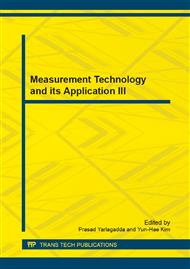p.938
p.944
p.948
p.954
p.958
p.964
p.970
p.976
p.987
Direct Navigation Mode and Indirect Navigation Mode for Integrated SINS/GPS
Abstract:
There are two options for the state estimation procedure by the integration filter for the integrated SINS/GPS, namely: direct navigation mode and indirect navigation mode. Determining which one of the two navigation modes will be more celebrated than the other under different conditions is an important but so far less seriously treated issue. The two navigation modes were systematically studied in terms of the system model, filtering algorithm and application issues. The car-mounted experiments were carried out to compare two navigation modes under different road conditions. The results show that direct navigation mode performs indirect navigation mode in terms of accuracy and stability. However, indirect navigation mode has low calculation burden and simple filter design.
Info:
Periodical:
Pages:
958-963
Citation:
Online since:
June 2014
Authors:
Price:
Сopyright:
© 2014 Trans Tech Publications Ltd. All Rights Reserved
Share:
Citation:


